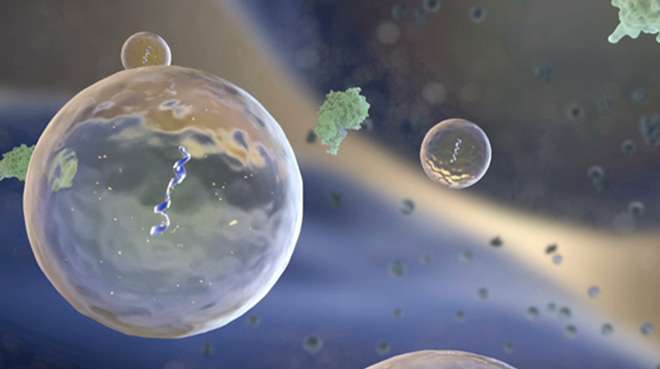New live imaging shows how cancer communicates with other cells

The ability to track and observe live cells in the body has offered unprecedented opportunities to the scientific community to understand key biological processes. Until now, reporter systems to track cells, especially in diseases like cancer, have largely been non-specific and difficult to implement. A team led by Dr. Jacco van Rheenen at the Hubrecht Institute in Utrecht, Netherlands became the first in the world to capture high-resolution in-vivo images of cancer cells interacting with other cells in the body. What they observed on film was even more interesting. Cancer cells were capable of transferring "malignancy" to pre-cancerous cells making them behave like malignant cells. The study was published in the journal Cell's May issue.
How do cancer cells communicate?
Cells in our body, including cancer cells, are known to release small membrane bound sacs called extracellular vesicles (EVs) that carry proteins and genetic material in the form of DNA and RNA. These EVs released by the cells can be absorbed in surrounding cells in the body. EVs are known to play a vital role in cell-cell communication and signaling by delivering macromolecular messages. In cancer, many studies had observed transfer of these EVs between tumor cells to other recipient cells. But all of these studies were conducted in controlled culture mediums outside of the true biological microenvironment of tumors.
Rheenen and colleagues used a mouse model injected with highly metastatic breast cancer cells to study the transfer of EVs released from the injected breast cancer cells to the surrounding cells in various stages of malignancy. Cells that took up the cancer cell EV turned green using their reporter system, which was then recorded. They observed that less malignant tumor cells engulfed these released EVs. These cells then displayed high cell migration and metastasis, a well established hallmark of cancer, due to expression of EV-derived messenger RNA. This increased both the motility of recipient cells as well as their ability to spread to other organs. Interestingly, this vesicle transfer occurred both within the same tumor and also between distant ones. The findings implied that cancer cells are also capable of long range interaction and transfer of phenotypic traits; which would mean that metastatic cells of such tumors cannot be treated by alternative therapies (e.g. in chemotherapy resistant localized tumor cells).
The authors of the study also showed that uptake of motility-inducing mRNA were not biased towards faster cells, thus establishing the presence of a fair playground for cells to interact and influence behavior. This not only means that tumors increase their complexity by sharing genetic material, but also offers opportunities to exploit this association. Transferred genetic material could serve as biomarkers to study cancer staging and progression.
This study has come in quick succession of the recent landmark study by Berridge & Neuzil who established mitochondrial DNA movement between cells in breast cancer and melanoma mouse models. Cancer cells lacking mitochondrial DNA obtained it from nearby normal cells, something previously assumed to be impossible. Mitochondrial defects, established in cancer as well as in more than 200 diseases, can now be potentially treated with synthetic mitochondrial DNA targeted to inhibit diseased cells.
Rheenen et. al. uncovered a new vantage point of observing cells and also laid down groundwork of EV-driven cancer therapies. Researchers can now envision possibilities of interfering or inhibiting EV transfer to treat cancer. Cell-cell communication is important for a variety of biological processes—decoding this communication from one cell type to another in the context of the living tissue is the key for understanding disease biology.
More information: "In Vivo imaging reveals extracellular vesicle-mediated phenocopying of metastatic behavior." Cell. 2015 May 21;161(5):1046-57. DOI: 10.1016/j.cell.2015.04.042




















